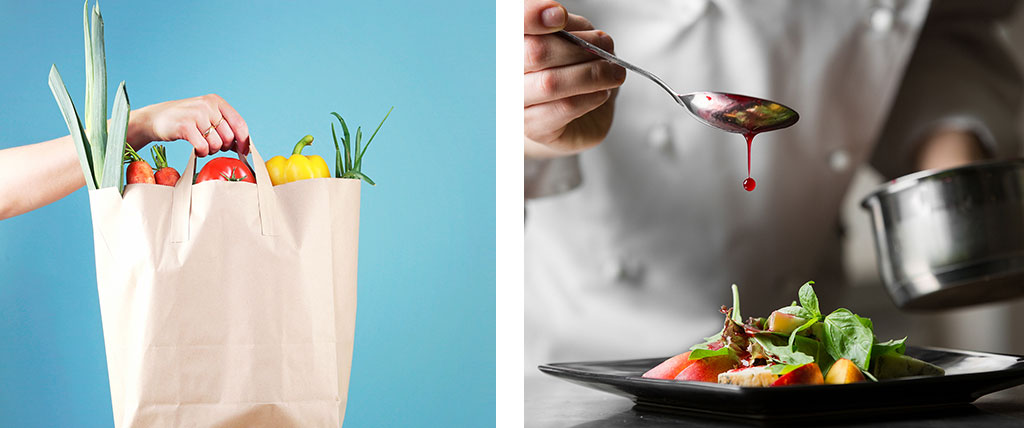Foodservice operators’ path to purchase is multi-step with multiple influences. Direct selling remains critical – but in and of itself, is inadequate. Today’s typical path to purchase is six to seven steps; to win, manufacturers need to participate in each and every step.
What We Did. In April 2021 FoodMix surveyed 1,135 U.S. and Canadian foodservice customers about their purchasing needs and behaviors as well as their preferred information sources. The research was done in partnership with The Affinity Group. Foodmix conducted a similar P2P study in 2013. Differences in methodology and sampling preclude direct comparisons between the two studies, but the findings are strong enough to identify directional trends highlighted below.

A return to human contact. Foodservice remains a relationship business. From the research, we’re seeing a reconnection with people as an influence in purchase decisions. Many operators start by asking a salesperson or a colleague, such as a partner, employee, chef or other operator, for information or advice on which new items they should consider.
Understanding patrons’ needs is more important than ever. Customers’ needs is the No. 1 driver of what items operators decide to add to their menu. Seventy percent of operators surveyed said their decisions about what to add is heavily influenced by what customers tell them. The better you understand consumers’ needs and preferences, the better you can create selling stories that align with operators’ focus on patron-driven menu additions.
Develop your influencer strategy. Foodservice manufacturers: Take note of the lessons learned by your retail counterparts – we are firmly in the age of the influencer. Foodservice brands need a robust influencer strategy to win because, based on our research, operators’ top three influences on what they choose for the menu – consumers, vendors, and colleagues/employees – are all, well, influencers.
Social media cannot be ignored, especially with younger operators. A whopping 39% of respondents under 35 say their new-product purchase decisions are heavily influenced by what they’re seeing on social media. (And, overall, 25% of operators buying new products are heavily influence by Instagram, Facebook and other social media.) Manufacturers can leverage their influence with younger operators through targeted social media. Older operators are coming around to social media, but they tend to be more influenced by food and trade shows.
Selling at virtual events remains an unsolved puzzle. The research shows that virtual events and shows have had limited success in giving operators information, ideas and introducing them to new products. Of respondents who attended a virtual event in the previous 12 months, just one in five (21%) were satisfied with the event as a good information source for new products.
Operators still want quality – but the value proposition is more critical than ever. Even during the 12-month depth of the pandemic, operators were still buying new products. Half (54%) reported 10% or more of their total purchases made in the previous 12 months were for new items. The most-cited reasons for new purchases during the pandemic were to improve operational efficiency (54%) and reduce costs (45%). By comparison 34% of operators purchased a new item to improve quality. We believe that in a post-pandemic world of rising costs for labor and supplies, cost containment and operational efficiency will remain top of mind for many operators.
Pandemic buying offers hope to foodservice companies in the post-pandemic world. As the economy recovers, we expect an increase in new product purchases driven by reasons of increasing traffic and check averages – both of which saw a decline during the pandemic. Further evidence that the future bodes well for food and ingredient suppliers: Two-thirds of operators surveyed said they will be adding more or the same number of items to their menu in 2021 as they did in pre-pandemic 2019.
It’s never been more important for manufacturers to have a strategy to connect with operators at every point on their path to purchase.
Interested in learning more about how we can support your food or food-related brand? Contact Us today.


